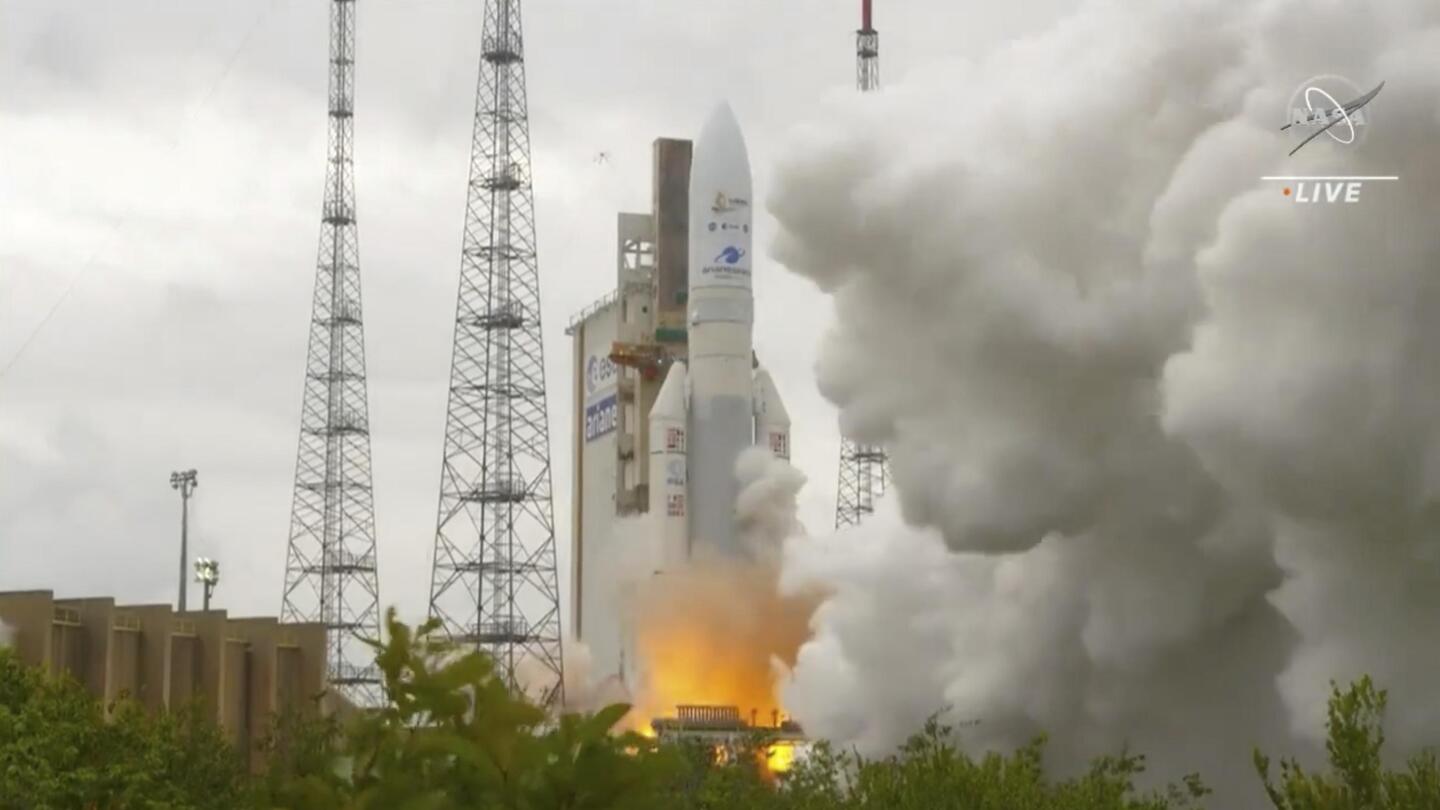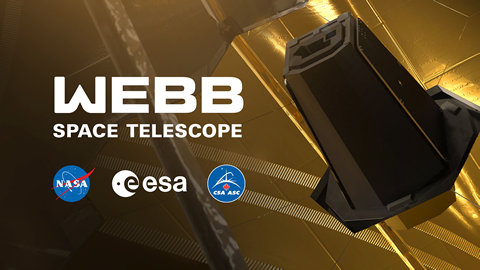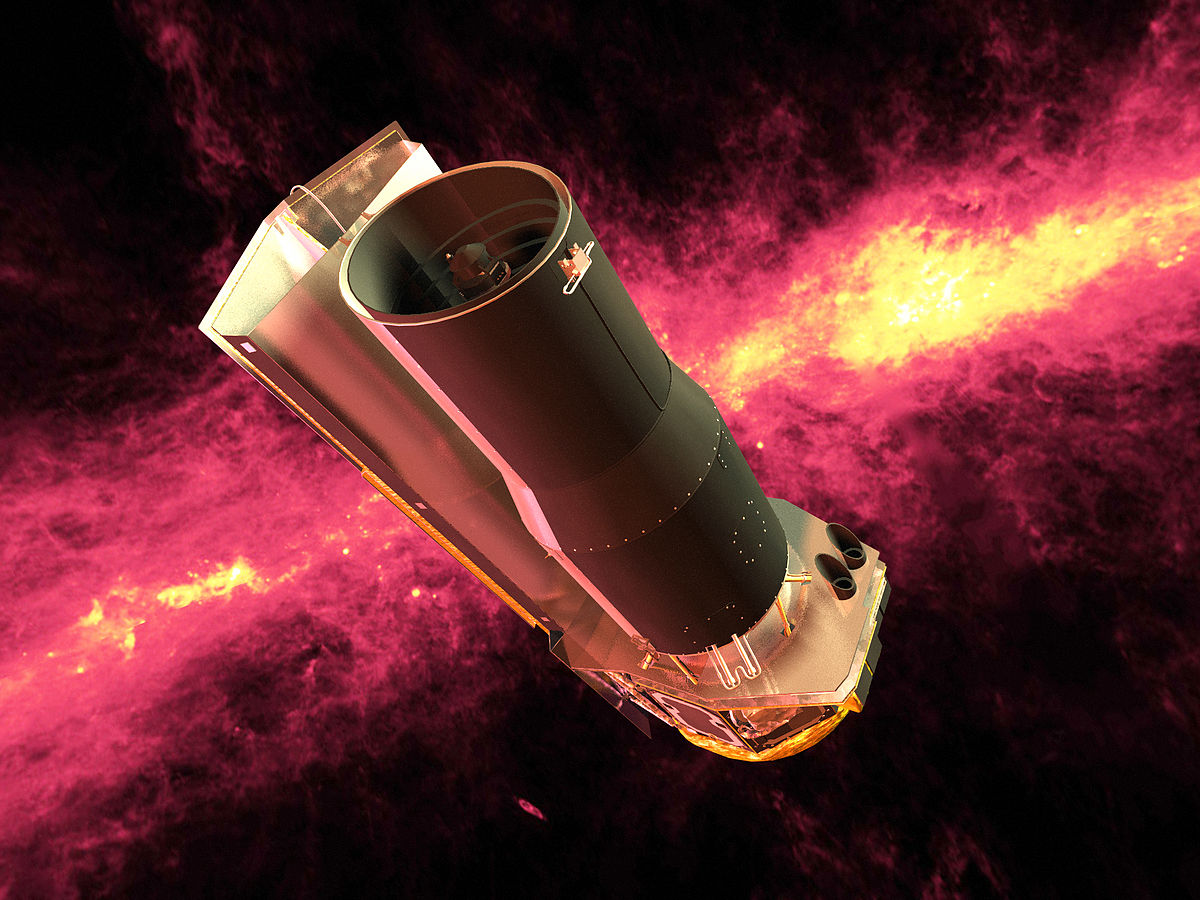December 30, 2021
MEDIA ADVISORY M21-171
NASA Plans Coverage of Webb Space Telescope Deployments
Thousands of parts must work correctly, in sequence, to unfold NASA’s James Webb Space Telescope into its final configuration, all while it flies to a destination nearly 1 million miles away.
Credits: NASA/Chris Gunn
Over about the next two weeks, NASA will provide broadcast coverage, a media briefing, and other updates on major deployment milestones for the James Webb Space Telescope, the world’s largest and most powerful space science telescope.
Broadcasts of milestone events will air live on NASA TV, the NASA app, and the agency’s website.
Webb, an international partnership with the ESA (European Space Agency) and the Canadian Space Agency, launched Dec. 25 from Europe’s Spaceport in Kourou, French Guiana. The observatory had been folded up, origami style, to fit inside an Arianespace Ariane 5 rocket for launch. Webb is now in the complex and intricate process of unfolding in space, as it travels nearly 1 million miles to its destination, the second Lagrange point or L2.
Webb’s deployment sequence is a human-controlled process that provides the team with the flexibility to pause, assess data, and adjust as needed. The timing and order of all milestones may therefore change. NASA will host live broadcast coverage to mark the following milestones, with specific times and dates updated as they approach:
•Sunshield tensioning: The full deployment of the sunshield, the most challenging element for Webb, will mark a critical milestone for the mission. This step is scheduled for completion about eight days after launch, no earlier than Sunday, Jan. 2.
•Secondary mirror support structure deployment: The support structure that holds the secondary mirror in position to focus light collected by the primary mirror is set for deployment about 10 days after launch, no earlier than Tuesday, Jan. 4.
•Webb deployments complete: With the unfolding of the second of Webb’s primary mirror wings, the Webb team will have completed all observatory deployments. This is scheduled to take place about 13 days after launch, no earlier than Friday, Jan. 7.
NASA provides regular updates on the Webb telescope blog. The public can also follow Webb’s deployments online via a “Where is Webb?” interactive tracker and a Deployments Explorer.
NASA Press Briefing
NASA will hold a media briefing as soon as possible after the end of the live broadcast coverage of Webb’s final deployments. The agency will determine the timing of this briefing as final deployments approach and stream the event live on its website.
NASA’s media accreditation policy for virtual activities is available online.
Social Media Engagement
Members of the public can stay connected with the mission and let people know about Webb’s deployments on Twitter, Facebook, and Instagram with #UnfoldTheUniverse. Follow and tag these accounts:
•Twitter:
@NASA, @NASAWebb
•Facebook: NASA, NASAWebb
•Instagram: NASA, @NASAWebb
Additional Webb Resources:
•Digital media kit
•Image and video galleries
•Media interview request form
The Webb mission will explore every phase of cosmic history – from within the solar system to the most distant observable galaxies in the early universe, and everything in between. Webb will reveal new and unexpected discoveries and help humanity understand the origins of the universe and our place in it.
For more information about the Webb mission, visit:
-end-
Press Contacts
Alise Fisher / Natasha Pinol
Headquarters, Washington
202-358-2546 / 202-358-0930
alise.m.fisher@nasa.gov /
natasha.r.pinol@nasa.gov
Laura Betz
Goddard Space Flight Center, Greenbelt, Md.
301-286-9030
laura.e.betz@nasa.gov


